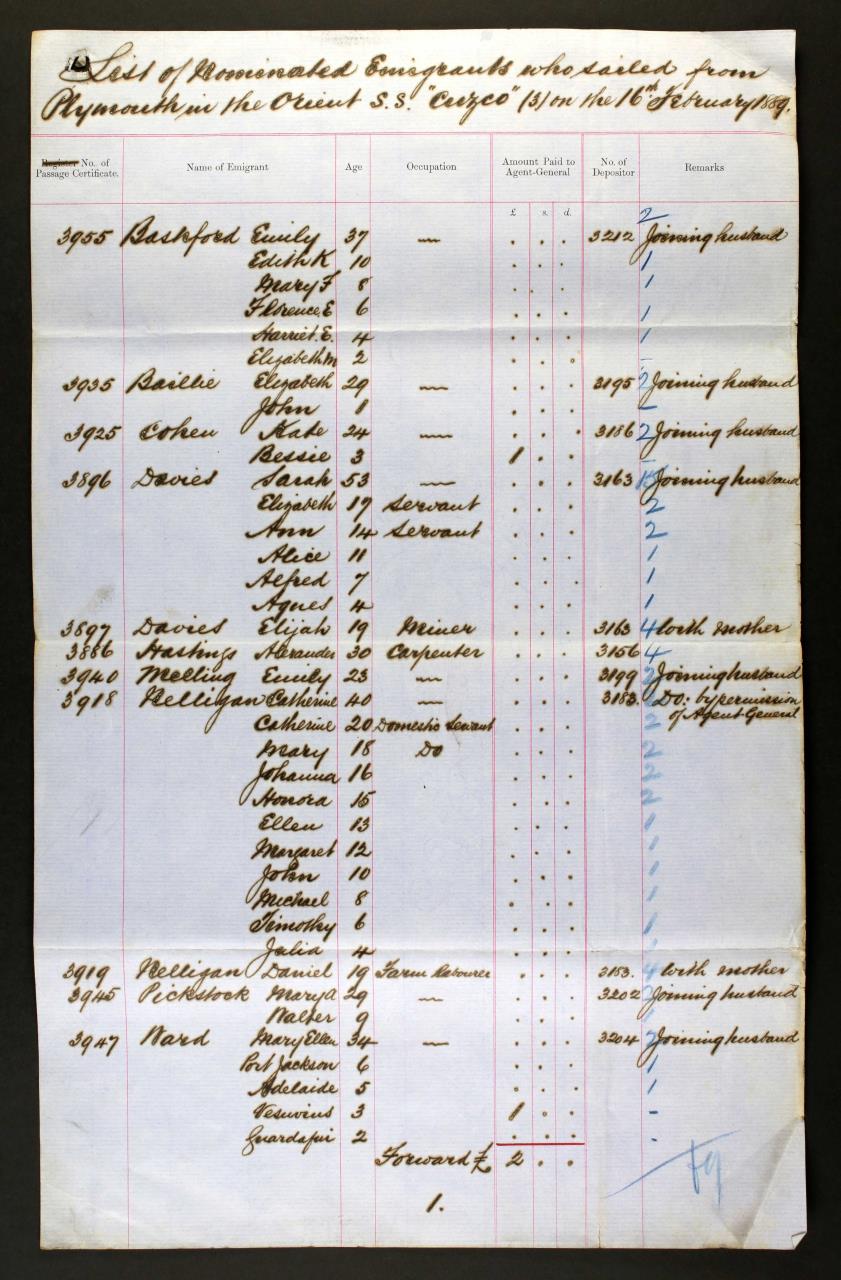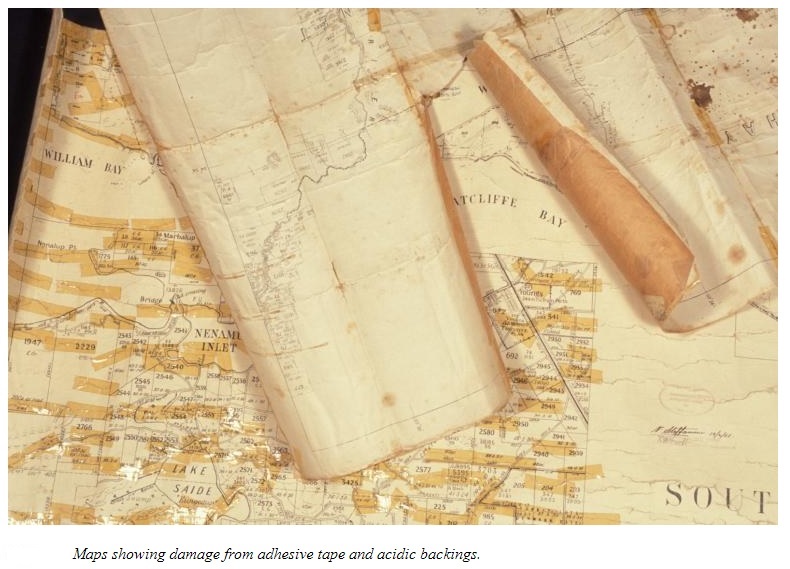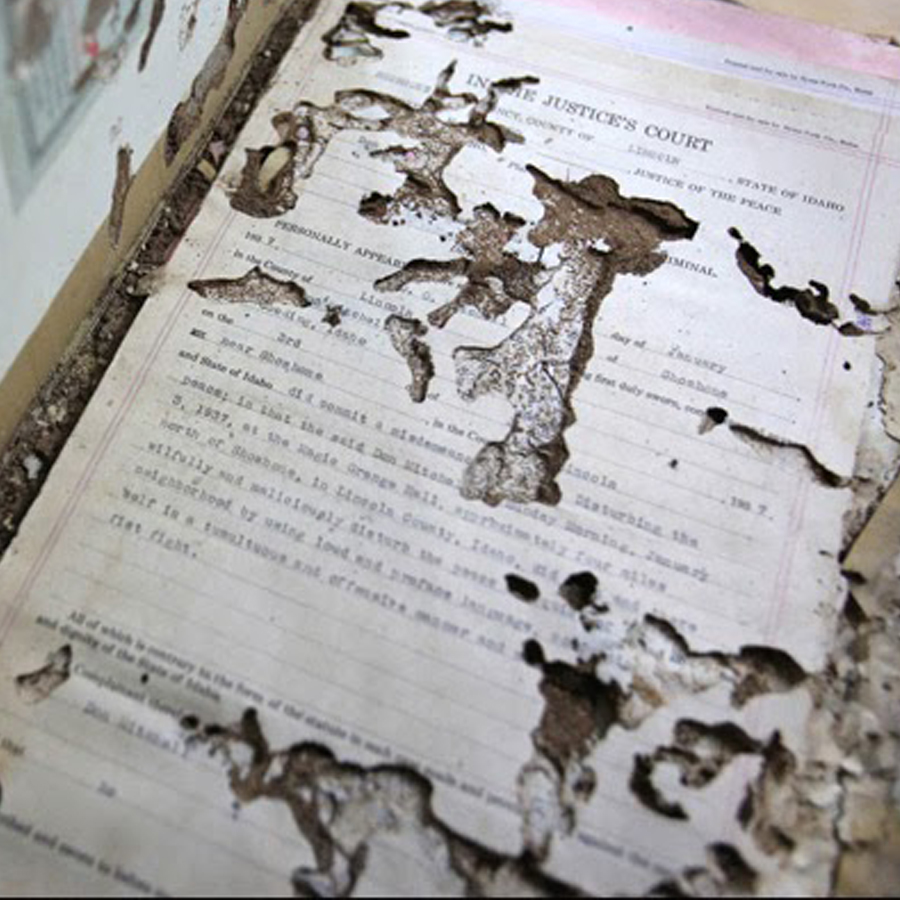Published on Tuesday, 19 March 2024 at 4:05:43 PM
Welcome to #TimeWarpTuesday as we get a little bit technical and talk about how to keep and store your old photographs and documents to ensure they stay accessible in years to come. With thanks to the Archives Unit of the Australian Institute of Aboriginal and Torres Strait Islander Studies (AIATSIS) for allowing us to make copies of their notes.
STORAGE STRATEGIES FOR YOUR HOME ARCHIVES
- Part Two –
Preserving Your Family Papers
We keep and care for all types of documents in our homes – posters, certificates, letters, newspaper clippings, concert tickets etc. For the most part they will have been made on poor quality paper which is now deteriorating and in need of preservation.
There are some easy steps you can follow to prolong the life of your family archive.
What is a document?
Any document that you have in your collection has two components – the paper and the printed information.
Prior to the Industrial Revolution, paper was hand made from recycled cotton and linen rags, it was very good quality and very permanent. After 1850, the demand for paper increased to the point where wood had to be used as a source of fibre. Wood was abundant but very strong processing chemicals had to be used to break it into fibres. It is these strong acidic chemicals and the woody component of the pulp (called lignin) which cause modern papers to deteriorate. Recently, paper mills in Australia have converted to alkaline, not acid, processing systems. This means that a lot of the paper produced in Australia now is of quite good quality with a better life expectancy.
The printing on the page will usually be in either an ink or toner. Inks come in a huge variety, from very stable oil-based printing inks to very unstable, water-based felt-tip inks. A very common ink found on documents from the 19th and early 20th centuries is iron gall ink. This ink is a dark brown/black colour and although very easy to write with, was so acidic that over time, it burns the paper fibres. In extreme cases, the paper can crumble away were the writing is, leaving a network of holes in a now very fragile document.


Emigration record of people traveling to Australia from the UK. In this example the original ‘iron gall’ ink used to write with is causing the loss of paper where the ink and paper meet. Enlarged section of the heading from the document, clearly shows where the ink has started to eat away at the paper, leaving behind holes.
Courtesy of Ancestry.com.au
Inks made from carbon black (from charcoal or soot) are the most stable. They do not fade or change colour, nor rub off or damage the paper. These inks are still available in jars to use with a fountain pen, but you can also buy them in a ready-made pen.
The least stable inks are cheap dye-based inks which fade, and or change colour in light, bleed through the paper and run badly when accidentally exposed to liquids. Some fibre tipped pens and stamp pads use inks like these.
Black photocopy toner is generally quite stable. Documents produced on a modern photocopier, on modern photocopy paper should last hundreds of years if stored correctly.
One type of document that is not at all stable is the thermal fax. The images on these papers do not last more than a few years even in good storage conditions. The image will start to change from black to brown and will eventually fade to the point where it will be unreadable. Any document on thermal fax paper should be photocopied immediately, before the image fades out.
Handling
Fragile papers need very careful handling. If handled incorrectly creases can turn to tears, tears can be extended, dog-eared corners can become separate and vital information can be lost in the process.
The basic rules for handling fragile material are:
- no food or drink near your records,
- have clean, dry hands with no lotions or creams on them,
- wear cotton or surgical gloves if you like, but it is often difficult to pick up torn, fragile items with gloved fingers,
- use a soft pencil (2B), not pen, to make notes or annotate records.
- photocopy documents that are going to get a lot of use, and use this reference copy instead of the original,
- put fragile material into plastic sleeves (see below) to provide support while still being able to view the item. A sheet of acid free photocopy paper can be inserted in the sleeve to provide extra support,
- avoid using metal fasteners like staples and paper clips – in time these will rust and stain the paper. Plastic paper clips are available, or you can put multiple page items in a single plastic sleeve to keep them together. If you only have metal paperclips, you can put a slip of paper between the clip and your documents to protect them from potential rust stains,
- oversize, fragile materials (like maps or charts) should be carried on a piece of board slightly larger than the item to avoid weak areas moving around while the item is used,
- avoid exposing your objects to strong light for extended periods of time.
Keep in mind that your records may well be irreplaceable and as such deserve as much care as you can give them. You’ve gone to a lot of trouble to gather your collection and keeping them in good condition will save you, or future generations, the trouble of gathering them all over again.

Damage to documents due to use of sticky tape - moral to the story - don't use sticky tape on precious documents!
Courtesy of the National Museum of Australia.
Storage
One of the easiest things to do for your records is to protect them from light, dust and physical damage by putting them in a box with a close-fitting lid. This also helps protect them from accidental water spills or leaks. The box can be cardboard or a plastic crate bought from the supermarket. Although metal boxes offer greater security and fire resistance, they do present a rust problem in high humidity environments.
Another bonus of putting your records into one box is that if you have to evacuate your home, in a fire or cyclone, you can grab the box quickly and take it with you as you leave the area.
Within the box, individual records can be put into plastic sleeves so that you can read all the information without having to touch the item directly, or acid-free folders which will provide support for fragile records. Or both – if you put your items into a good quality plastic sleeve (see below) and then into a folder, you can use cheaper quality manila folders, as they won’t be in direct contact with your records.
There are a range of plastic sleeves that are suitable for use with archival records. “Good” plastics are polyethylene (HDPE or LDPE, polypropylene (PP) and polyester (PET). For archival storage, polyester is the most stable choice. Polyvinyl chloride (PVC or vinyl) should be avoided. This is the plastic that has that characteristic plastic smell and an oily quality to the surface. PVC will, over time, release vapours which are acidic and extremely damaging to photographs and paper documents. It can also cause some media, like photocopy toner, to soften and stick to the plastic or other sheets.
Document sleeves that have the words “copy safe” on then are made from polyethylene or polypropylene and are available from the supermarket, newsagents and stationary shops. These sleeves can be put into a ring binder to keep them together. Other options are zip lock sandwich bags and oven bags. Oven bags are made of polyester which is the most stable plastic of the three listed above. Polyester film is sold under the names “Mylar” or “Melinex”.
If you live in a humid climate, like tropical north Australia, the choice of enclosure is a difficult one. Moisture levels can build up inside plastic sleeves activating mould growth. Paper sleeves on the other hand will be attacked by insect pests like silverfish and cockroaches. The best compromise may be to file your collection into a plastic crate with a tight-fitting lid (to keep pests out), with sheets of paper in between each item to help absorb any moisture inside the box. And keep your fingers crossed.
The National Archives of Australia (NAA) has a list of materials on their web site that have passed the Photographic Activity Test (PAT):
https://www.naa.gov.au/information-management/storing-and-preserving-information/preserving-information/preserving-photographs/about-photographic-activity-test
This list includes plastic sleeves and bags that can be purchased from your local shops, as well as products made specifically for archival storage.
Storage environment
The area you use to store your records should be cool and dry. The cooler the better, however, cold temperatures often mean damp conditions, which need to be avoided. High temperature and moisture levels will cause documents to deteriorate rapidly. The ideal conditions for paper storage are around 20°C and 50% humidity. Avoid storing documents in the attic, the shed or under the house. Use an area inside the house that stays as cool as possible but doesn’t get damp and mildewy. A space with no external walls is best like a hall closet or linen cupboard. The advantage of this kind of space is that changes in temperature and humidity are less dramatic – the surrounding rooms act as a buffer, smoothing out the highs and lows in the outer rooms.
These kinds of cool, quiet places are also the home of insects. If you use these spaces, you should check every few months to be sure silverfish or other insects haven’t moved into your collection. Silverfish will eat the paper and any starch-based adhesives that might be on your records. Instead of using moth balls or insect strips, store your collection in something that insects can’t get into, like a box with a tight-fitting lid, or zip lock plastic bags.

The damage done by silverfish when left to infest paper documents.
Courtesy of Perth Pest Control
Duplication
Duplication of documents is easy and very effective. A simple photocopy will allow you to access the information on your fragile records without over handling the originals. Once a copy has been made the original can sit safely in storage while you refer to your copy. Copies can also be sent to other family members for their records. It is a good idea to make several copies at one time to avoid having to handle fragile records repeatedly. Black and white copies are the most stable in the long term. Colour copies are less stable, as the inks can fade.
Scanning documents is popular and is another way of accessing information, while protecting the original. Be careful because electronic files in home computers and CDs aren’t strictly speaking archival storage as the technology rapidly becomes obsolete and the long-term stability of the CD materials is not yet known.
We hope you have enjoyed this look at the introductory side to documents, how they were made and some of the effects of time, temperature, light exposure and storage can have on our paper documents and family treasures.
If you would like help with scanning your photographs or documents, please reach out. You can get in touch with us via Ph: 08 9373 5500, E: vicparklibrary@vicpark.wa.gov.au, or drop in.
#LoveVicPark
Back to All News